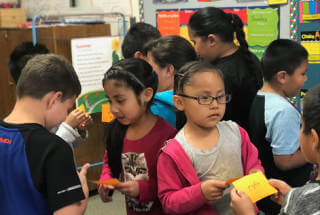
Cooperative learning is critical to learning and critical to student engagement. Students learn better from one another than they do their teachers. The effective teacher is the teacher who uses this to everyone's advantage. One way to get students more engaged is to give them opportunities to work in groups. Of course, we have to help them understand how best to work with one another, but the benefits far outweigh any inconvenience.
Getting students to work effectively and efficiently is important. The fact of the matter is that when a teacher asks a question and one student answers, only one student was given a chance. On the other hand, when a teacher asks a question and has the students discuss it in pairs or in small groups, every student is given a chance. Using groups helps teachers maximize the number of opportunities students have to interact with the content, the language, and one another.
Also, no matter how "cool" of a teacher you are, students (believe it or not) prefer to be with their peers. Effective teachers make sure students have plenty of opportunities to work with one another.
Another critical advantage to using groups is how it helps students develop the valuable life skill of working with others towards a common goal. This, whether headed for college or a career is invaluable. Since it doesn't happen on its own, the teacher must encourage it by providing plenty of group work opportunities and plenty of guidance on how to work best with others.
Click the button below to claim your free ebook and join our mailing list.